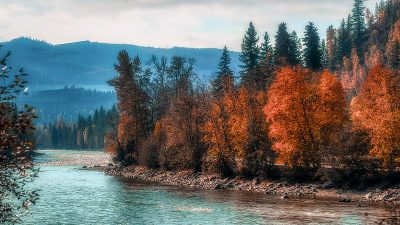Ladakh, India geothermal project to resume work in 2024
Work on the Puga Valley geothermal project by the ONGC in Ladakh, India is currently postponed pending the arrival of new drilling equipment.
Work at the Puga Valley geothermal project in Ladakh, India by the the state-run Oil and Natural Gas Corporation (ONGC) has currently been stalled following an incident in 2022 where geothermal fluids flowed into the Puga Stream, prompting complaints from civil society and environmental organizations. To ensure that this does not happen again, a larger drilling rig is currently being mobilized to the project site.
With the logistical challenges, work on the project is expected to resume by 2024.
History of the Puga Valley geothermal project
Plans for the geothermal project in Ladakh were first announced in early 2021 with the signing of an MOU between the ONGC and the local government of Leh, the capital of Ladakh. The signed MOU foresees the development of a project, starting with a 1-MW Phase 1 pilot, with ONGC as the implementing agency.
“With this project, we hope to put India on the geothermal map of the world,” said Ravi, director general of the ONGC Energy Centre (OEC), a body set up by ONGC to research and develop renewable energy soruces. “In the initial stage, we intend to drill a 1,000-metre well, draw energy from temperatures above 200 degrees Celsius, and produce 1 megawatt [MW] of electricity. In advanced stages, we can attain up to 100 MW,”
In August 2022, the ONGC reported hitting high-pressure steam at 100 degrees Celsius after just a week of drilling. A separate report stated that temperatures ranging from 180 to 190 degrees Celsius were found at a depth of just 40 meters. These preliminary results made the project team very optimistic about the viability of the project.
Larger pressure than expected
While the very high pressures and flowrates were advantageous in terms of the viability of the project, it also created a major setback. There was far more geothermal fluid than the prepared equipment can handle, the unfortunate consequence being that some of the fluid flowed into the Puga Stream instead of being pumped back underground.
” … We had calculated that there would be 1-2 kg per square centimeter, but there were actually over 4 kg,” said Ravi.
This incident led to the postponement of the project while the proper drilling equipment is being mobilized. “Preparations are already under way for the transportation of the enormous drilling apparatus to Ladakh for the purpose of controlled drilling. Transporting this huge equipment is a major challenge given the tough terrain and logistical challenges along the 750km road from Jammu to Leh,” said Kumar.
Plenty of upside
Kunzes Dolma, a geothermal expert and researcher from the Reykjavik University in Iceland, pointed out that geothermal has plenty of benefits and that this incident should not dissuade from continuing the project. Particularly in remote areas like Ladakh, geothermal “can also be used to heat greenhouses, poultry farms, and residences in addition to producing electricity.”
Dolma also argued that geothermal has the least negative environmental impact of all energy sources. It has no carbon emissions, does not require a lot of land, and does not generate e-waste.
To avoid environment-related issues like the one encountered in Ladakh, Dolma recommended that India develop a more robust geothermal policy that draws from the experiences of countries like China and Iceland, where the geothermal sector is more advanced.
Acho Sharma Namrak, a councillor for the Karzok Constituency, said that the locals have been looking forward to the jobs that the project will create. “People have been waiting for this project’s completion for decades, hoping for energy and job opportunities. Additionally, a memorandum of agreement between the government and the company ensures job opportunities for locals.”
Source: The Third Pole


















